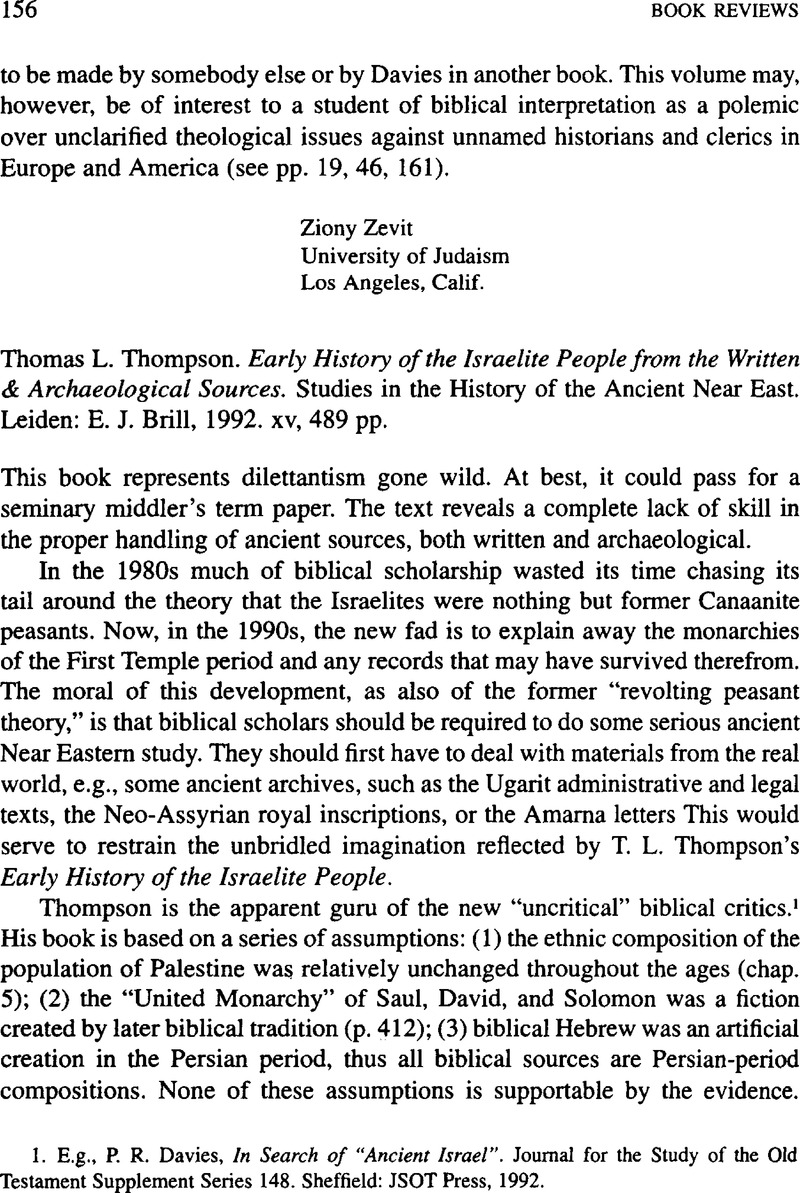Published online by Cambridge University Press: 15 October 2009

1. E.g., Davies, P. R., In Search of “Ancient Israel”. Journal for the Study of the Old Testament Supplement Series 148. Sheffield: JSOT Press, 1992.Google Scholar
2. Cf. Rainey, A. F., “Rainey's Challenge” Biblical Archaeology Review 12, no. 6 (1991): 60b, 93.Google Scholar
3. Biran, A. and Naveh, J., “An Aramaic Stele Fragment from Tel Dan” Israel Exploration Journal 43 (1993): 81–98;Google ScholarLemaire, A., “‘House of David’ Restored in Moabite Inscription,” Biblical Archaeology Review 20, no. 3 (1994): 30–37.Google Scholar
4. Aharoni, Cf. Y. and Avi-Yonah, M., The Macmillan Bible Atlas, completely revised 3rd ed. by A. F. Rainey and Z. Safrani (New York:Macmillan, 1993), pp. 86–87.Google Scholar
5. Thompson, Th. L., GonÇalves, F. J., and J. M. van Cangh, Toponymie palestinienne. Plaine de St. Jean d' Acre et Corridor de Jérusalem, Publications de l'lnstitute Orientaliste de Louvain 37 (Louvain-la-Neuve: Université Catholique de Louvain Institute Orientaliste, 1988).Google Scholar
6. See Thiele, E. R., The Mysterious Numbers of the Hebrew Kings (Grand Rapids: Zondervan, 1983), pp. 79–81.Google Scholar
7. Knauf, E. A., “War 'Biblisch-Hebräisch' eine Sprache?” Zeitschrift für Althebraistik 3 (1990): 11–23.Google Scholar
8. Smith, M., Palestinian Parties and Politics That Shaped the Old Testament (New York: Columbia University Press, 1971).Google Scholar